Google’s new Pixel 2 has everything you want in a high-end smartphone: water-resistance, Portrait Mode, and a good-looking screen.
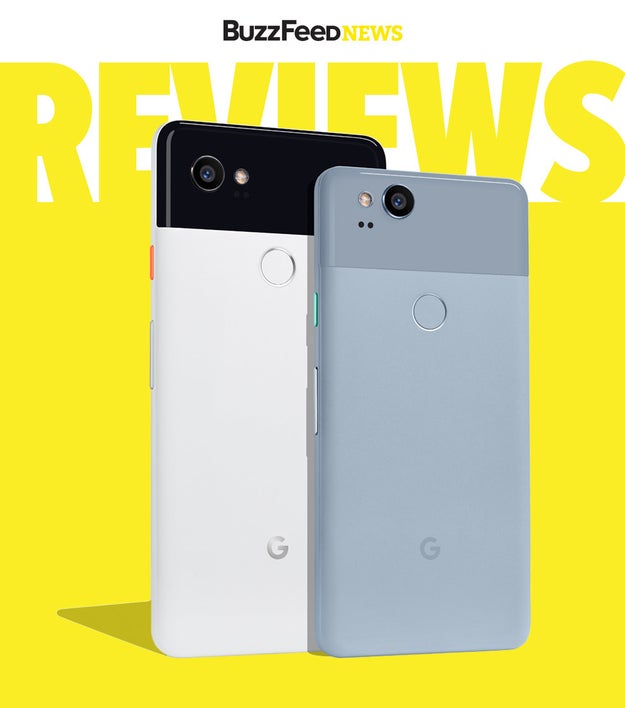
BuzzFeed News; Google
You probably don’t see a lot of people carrying around Google Pixels. In the US, nearly two-thirds of smartphone users in the US own either a Samsung or an Apple device. The Pixel accounts for less than 1% of the market, even though the company that designed it, Google, makes the Android mobile operating system, which runs 85% of the world’s smartphones.
What makes that stat even more surprising is that Google-designed phones are really damn good. Unlike Samsung’s phones, Google’s Pixel runs a version of Android that’s “clean.” In other words, it’s not full of crap, like preloaded apps, and displays the Android operating system the way that it was intended by the Android team (and not with an altered “skin” designed by the phone’s manufacturer). Above all, the Pixel will be the first Android phone to get the latest operating system updates, for at least three years, because Google guarantees it. Other Android users face wait times of up to a year to get new updates. All of which means it just looks and runs better.
The TL;DR is this: The Pixel 2 looks and feels like a really nice phone, especially when compared last year’s first-generation Pixel. Everything feels better and more expensive — from the more matte metal material to the vibration motor. Plus, like the rest of the “flagship phone class” (e.g., the iPhone and Galaxy Note), it’s water-resistant, so you don’t have to worry if you drop it in the pool or want to check emails in the shower.
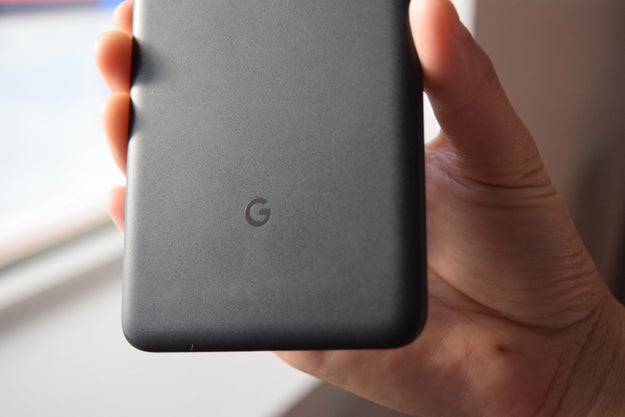
Its killer features, though, are still software-side: free, unlimited, original-resolution storage in Google Photos for every picture you take with Pixel (which means it is literally impossible to use up all your space on pictures and videos), a dedicated gesture for direct access to Google Assistant, and the artificial intelligence–powered Portrait Mode, which gives photos DSLR-esque blurry backgrounds, even when you’re taking a selfie.
But, as with all of Google’s services, using Photos and Assistant — two of the Pixel’s core apps — means opting in to sharing your data. No, a Google engineer isn’t looking at all of your photos or listening to all of your Assistant commands in a dark room in Mountain View, but those anonymized data points are used to feed Google’s machine-learning algorithms, which in turn are used to identify every photo of your mom in your camera roll. (They can recognize your dog now too.) It’s similar to how Google reads your Gmail inbox to serve you more relevant ads.
Which is to say, if you are already deep in Google’s panopticon — maybe you use Gmail and Calendar and Search and Maps — it isn’t such a leap. I’ve been using the Pixel 2 for the past five days and find that, since I already rely on Google’s suite of apps, the tradeoff is worth it.
Nicole Nguyen / BuzzFeed News
The vibration (as previously mentioned) is much more subtle and satisfying in the Pixel 2. What felt like a way-too-forceful buzz in the first Pixel is now a subtle, very satisfying pop. When using the phone, it vibrates every time you unlock your phone, press the home button, and open app shortcuts. In other words, there are a lot of vibration-powered interactions, unless you turn off haptic feedback.
Additionally, there are significantly more volume levels (25 instead of seven) for music and, when you switch from iOS, the Pixel 2 will now download all the Android versions of your apps too. Previously, it could only sync contacts, calendars, messages, and media.
You can squeeze the sides of the Pixel to activate Google Assistant now.

I loved being able to this — especially because the Pixel 2 XL is so damn big, which makes it hard for my little thumb to reach the home button. Because you can set the squeeze sensitivity, it’s unlikely it’ll accidentally activate.
Nicole Nguyen / BuzzFeed News
According to Google, the Pixel’s most noteworthy feature is its camera.
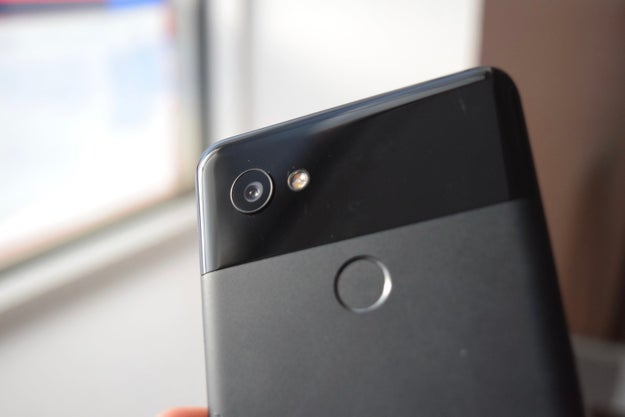
The Pixel 2 has f/1.8 aperture, which means that it can take better low-light images than its predecessor (which had f/2.0 aperture). Its rear camera actually has slightly less megapixels (12.2 MP this year vs. 12.3 MP last year), but the difference is hardly noticeable.
DXOMark, a company that rates image quality, gave the Pixel 2 its highest smartphone score ever for the second year in a row, an achievement that Google touted during its keynote presentation. The rating is especially remarkable, given that the Pixel 2’s camera only has one wide-angle lens, while the iPhone 8 Plus and Galaxy Note 8 (the second- and third-place smartphones) have two lenses: one wide angle and one telephoto for optical zooming. DXOMark cited the Pixel 2’s “impressive dynamic range” and “the best autofocus we’ve ever seen.”
Nicole Nguyen / BuzzFeed News
And it makes food look really good.

Nicole Nguyen / BuzzFeed News
The video stabilization is really nice, too.
Here's a slo-mo vid. Google also applies stabilization to its version of Apple’s “Live Photos,” which it calls “Motion Photos.”
Another big new feature: It’s water-resistant!
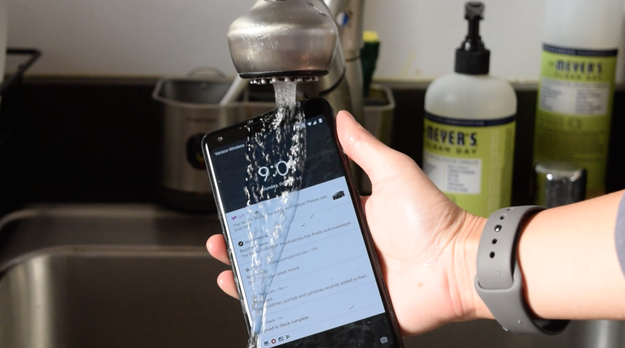
The Pixel 2 is rated IP67, which means it can withstand freshwater submersion in depths of about 3 feet for up to 30 minutes. I used the Pixel 2 in the shower and ran it under a sink and, as far as I can tell, the phone is still operational.
Nicole Nguyen / BuzzFeed News
It doesn’t have a headphone jack, so it comes with an audio jack to USB-C connector.

I’ve been living without a headphone jack for over a year and have fully bought into the Bluetooth-connected, wireless future. For traditionalists, there’s an included USB-C adapter that you can use for any set of wired headphones, and you can replace it for $9 when you inevitably lose it.
I understand that this may be a deal breaker for some — in that case, Samsung’s Galaxy S8 still has a headphone jack.
I keep the adapter permanently attached to my earbuds with a microphone, which I use to make calls, and it’s really not too bad. Because the battery life on the Pixel 2 is decent (for now), I haven’t run into the issue of needing to charge the phone and use headphones at the same time.
Nicole Nguyen / BuzzFeed News
Every day, I unplugged the device at 8 a.m. from its charging station. After a full day’s use (checking email, listening to Spotify, playing the occasional Facebook video, sending WhatsApp messages with photos and video), there was still between 50% and 60% power remaining. One day, I even used Strava (with GPS tracking on), a notorious battery drainer, for an hour, and the battery still lasted for another day.
Google claims one 15-minute “quick charge” session gives you seven hours of battery life, and I found this only to be true if I used the phone’s Battery Saver feature for the last few hours, which dims the screen and reduces background app activity.
The “Always-on Display” reduces battery life, but it’s useful.

This feature, also available in Samsung’s Galaxy phones, activates some pixels to always display the time (so you don’t have to turn on your phone to check it) and leaves other pixels turned off.
Nicole Nguyen / BuzzFeed News
It can also show whatever song is playing around you, Shazam-style.
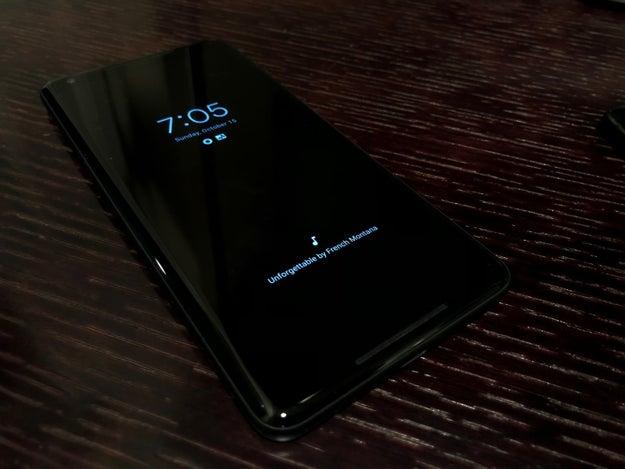
If you elect to turn on a feature called “Now Playing,” the Always-on Display can also show you the title of whatever song is playing, whether it’s in a car or coffee shop. It can only identify the “official” version of the song, however (like, for example, the album version of Demi Lovato’s “Stone Cold,” but not the nearly identical “Live in Studio” version from Lovato’s official YouTube account).
Nicole Nguyen / BuzzFeed News
So, should you get the Pixel?
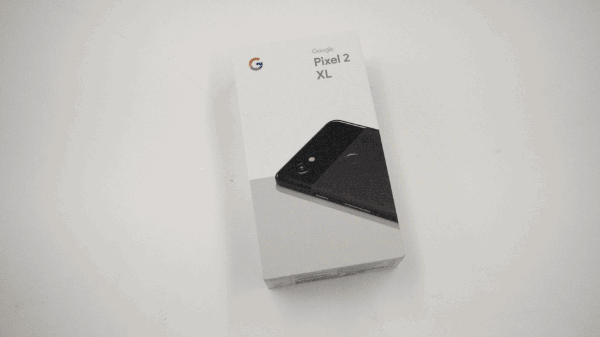
You can get a Pixel 2 unlocked from Google or through Verizon. The Pixel 2 is $649 for 64 GB, and $749 for 128 GB — or $27.04/month for two years — and comes in Kinda Blue, Just Black, and Clearly White (heh). The Pixel 2 XL is $849 for 64 GB and $949 for 128 GB — or $35.38/month for two years — and comes in Just Black and Black & White.
If you’re an Android user with an old phone or want one with a better camera, absolutely. It’s $100 less than Samsung’s Galaxy phones, it doesn’t have all of the app bloat, and it comes with all of the features you’d expect from a premium phone: water-resistance, a great camera, and a good screen.
If you’re an iPhone user, it’s a bit more complicated. If most of your family and friends use iMessage for texts or FaceTime for audio and video calls, it’s very hard to go green bubble. Android doesn’t have a consolidated messaging platform, unlike iOS. The Duo app comes pre-loaded on Pixels, but it’s only for video and audio calls (not texts), and it’s not widely adopted. You’ll have to convince your inner circle to move to WhatsApp, Signal, or Messenger, or face group text hell.
That being said: The free, unlimited photo storage in Google Photos is a pretty compelling sell for those who want to try something new. By switching to the Pixel, you’ll save $50 (compared to the new iPhone 8), and, if you already use Gmail, Drive, Docs, Chrome, and other Google apps regularly, the switch is relatively painless.
Nicole Nguyen / BuzzFeed News
Quelle: <a href="If You Own An Android Phone, It Should Really Be A Pixel 2“>BuzzFeed
Published by